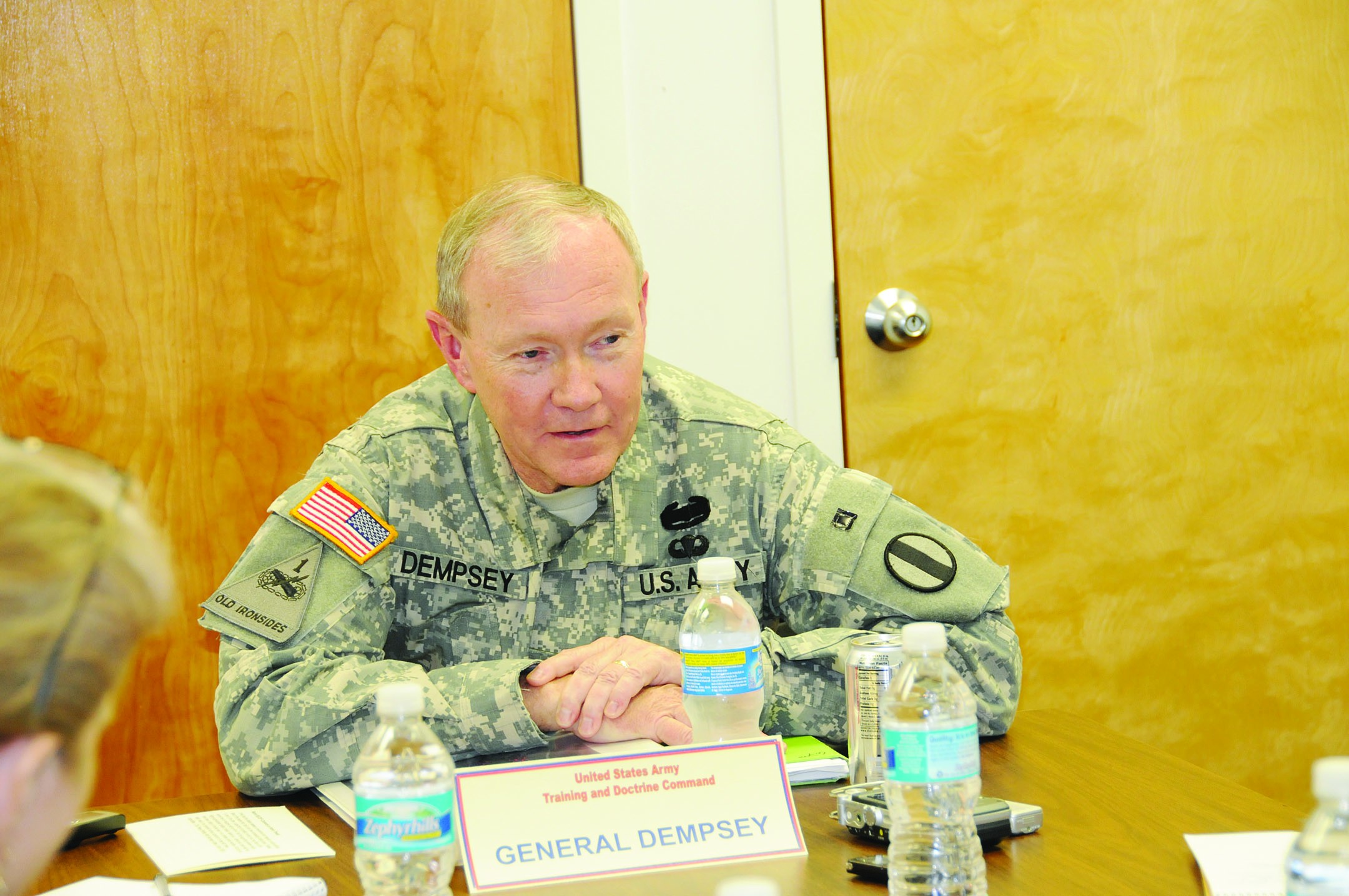FORT RUCKER, Ala.--While visiting the home of Army Aviation here April 14, the Army's Training and Doctrine Command (TRADOC) leader outlined his priorities and goals for leader development.
Commanding Gen. Martin E. Dempsey, who has led TRADOC for 120 days, described the transformation of young men and women into Soldiers as phenomenal.
"In about 20 weeks - 10 weeks of basic training and 10-12 weeks of AIT (Advanced Individual Traning) - we turn them from civilians into Soldiers and then we ask them to go to Iraq and Afghanistan," he said.
Dempsey added that TRADOC takes leaders entering and returning from combat and provides education and other experiences for leader development.
"Leader development is going well, but we can do better," he said.
While TRADOC is focused on the current fight it must also maintain a long-term strategy.
"My goals and priorities are to continue to support the commanders in the field, find a way to do better at leader development because we've got to produce leaders capable of doing what I do if they think they're going to do it in 2025, and then we've got to, I think, collectively integrate our efforts better at future force design," he said.
While here, Dempsey discussed the life span of the OH-58 Kiowa Warrior and training for missions in Iraq and Afghanistan.
"I do think it is reasonable for us, given the threats that we face, to continue to look at the existing systems and decide which ones can still do the job for us," he said.
Dempsey said the Army has adapted its training to meet its combat missions.
"We've gone to outcomes-based training," he said. "(As an example), we use to sit medics in a classroom and put (up) PowerPoint ... and we'd talk them through how to move a casualty. What we've learned in this fight is that Soldiers really need to be able to figure things out. We have to be adaptable at the institutional level. We've got to be adaptable at the Soldier level. So what he or she is going to face is not going to match what's in the classroom with 100 percent certainty."
He added that through the outcomes-based training the medics figure out how to move a casualty.
"That's what we're trying to get across the whole institution. We're not there yet. That is the goal," Dempsey said.


Social Sharing